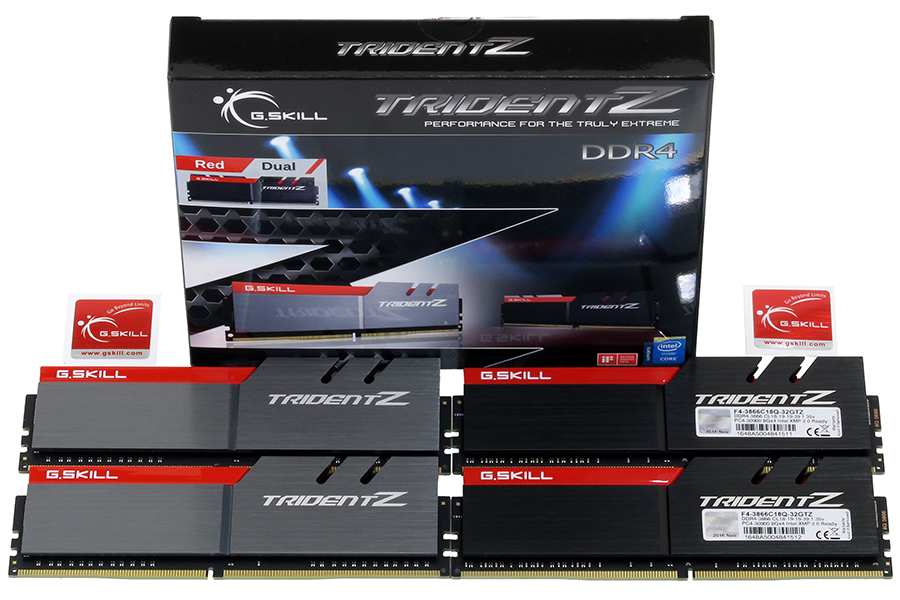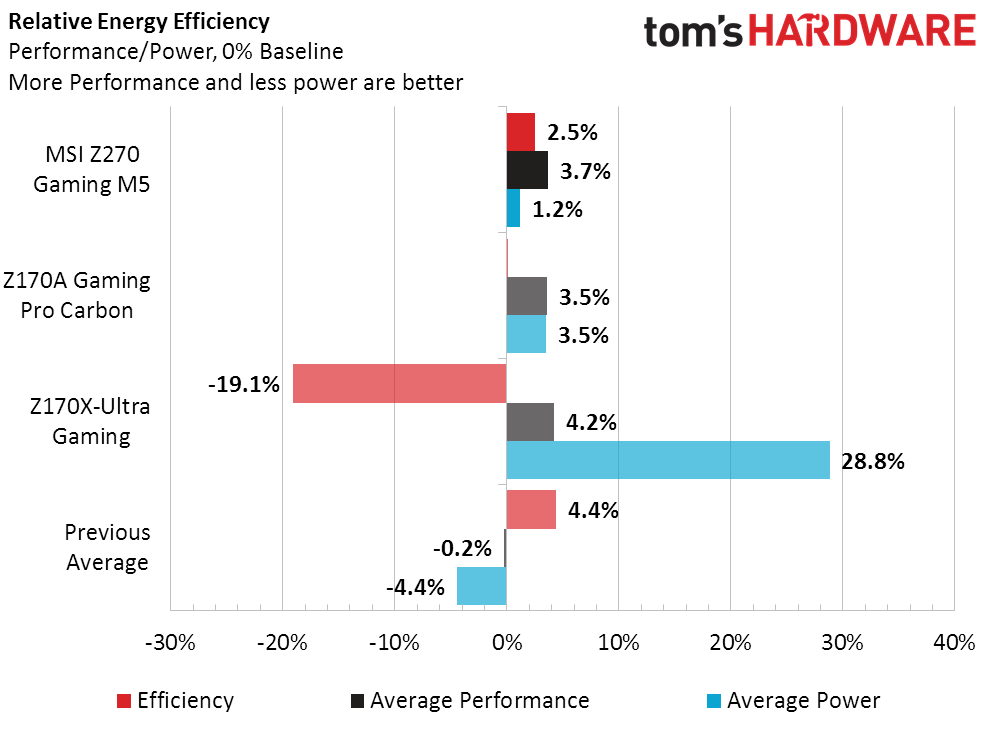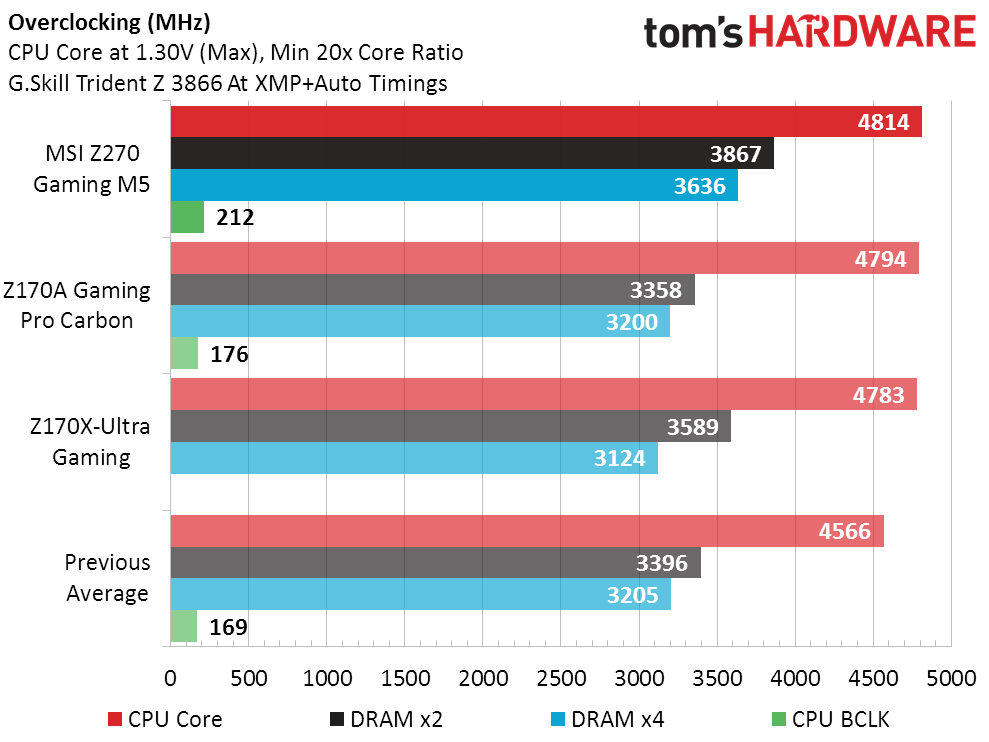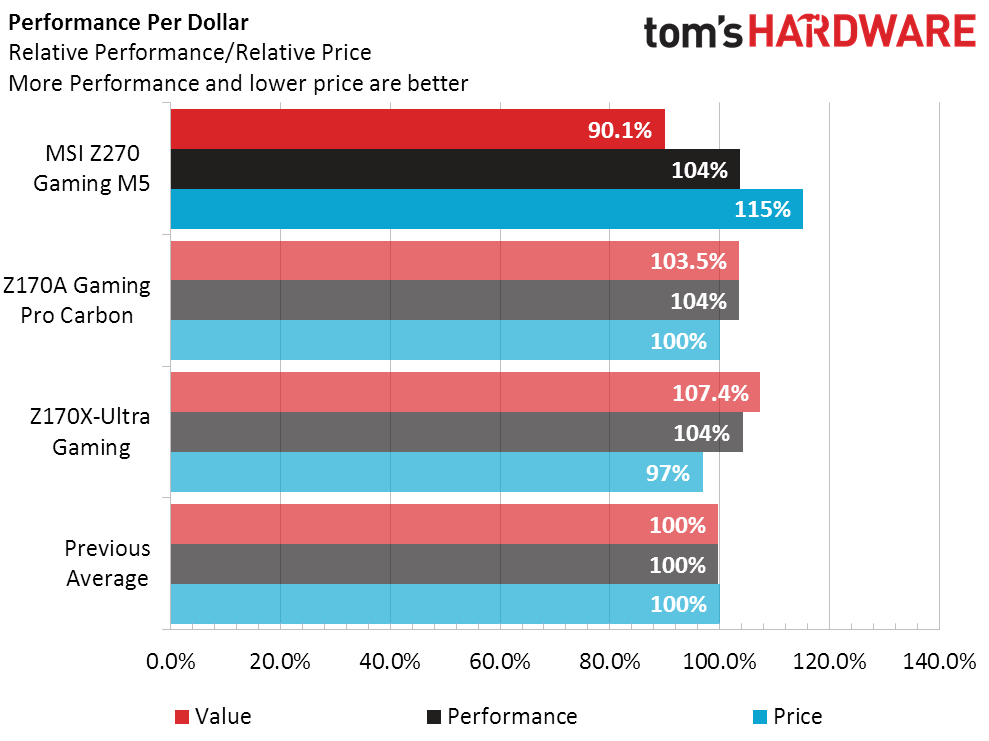MSI Z270 Gaming M5 ATX Kaby Lake Motherboard Review
Is MSI’s middle “Master” motherboard combines the firm’s extensive Z170 overclocking experience with Intel’s latest Z270 platform features. Is it worth the price of entry?
Why you can trust Tom's Hardware
Test Configuration, Results, And Final Analysis
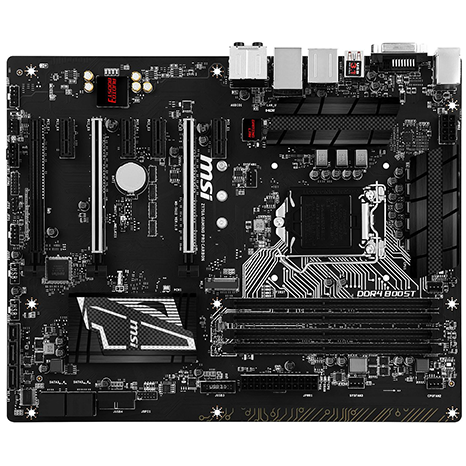
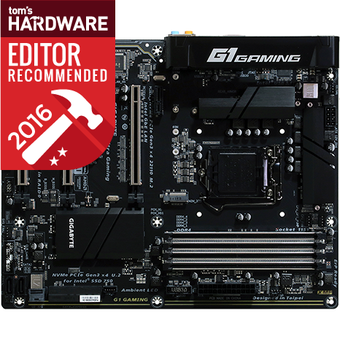
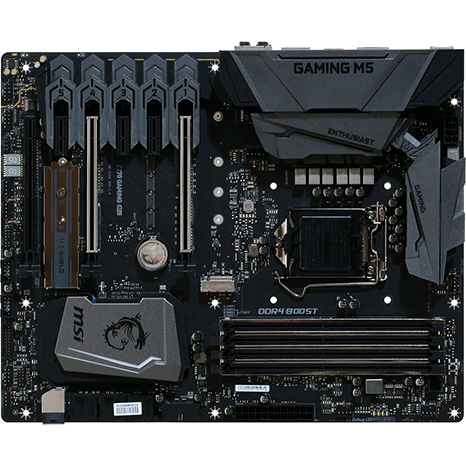
Some benchmarks require more than 8GB of DRAM to function optimally, but some motherboards have only two slots. G.Skill offered to cure our 4GB DIMM woes with a replacement 4x 8GB kit. A brief discussion got us a free set of its Trident Z F4-3866C18Q-32GTZ.
Remaining hardware is carried over from our fall 2016 Z170 update.
Test System Configuration
| CPU | Intel Core i7-7700K (Kaby Lake): 4.2-4.5 GHz, 8 MB L3 Cache, LGA 1151 |
|---|---|
| Sound | Integrated HD Audio |
| Network | Integrated Gigabit Networking |
| Graphics Driver | GeForce 372.90 |
Synthetic Benchmarks
Since this review corresponds to Intel’s official launch, “Previous Averages” use the Core i7-6700K. We’ll eventually replace all of that data with 7700K results as our charts fill up.
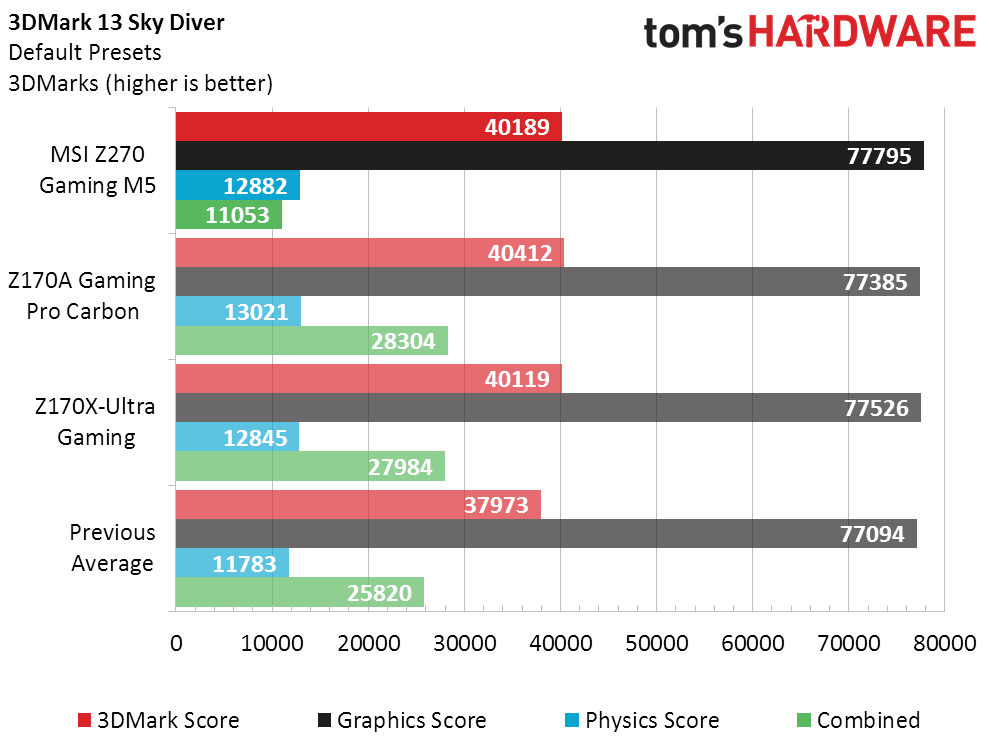
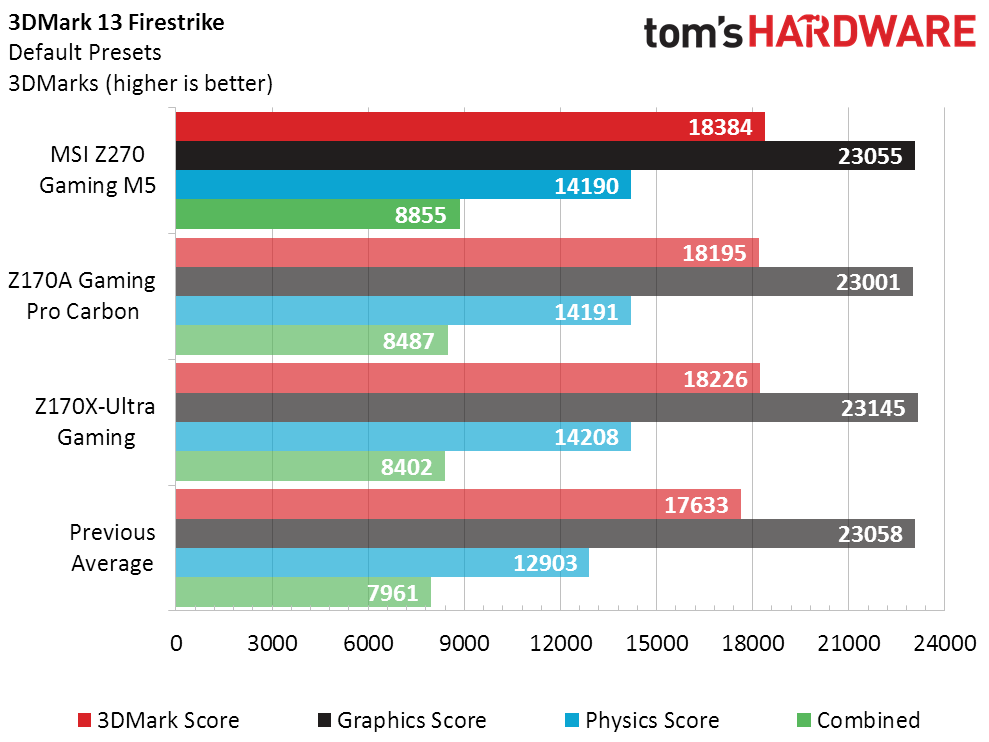
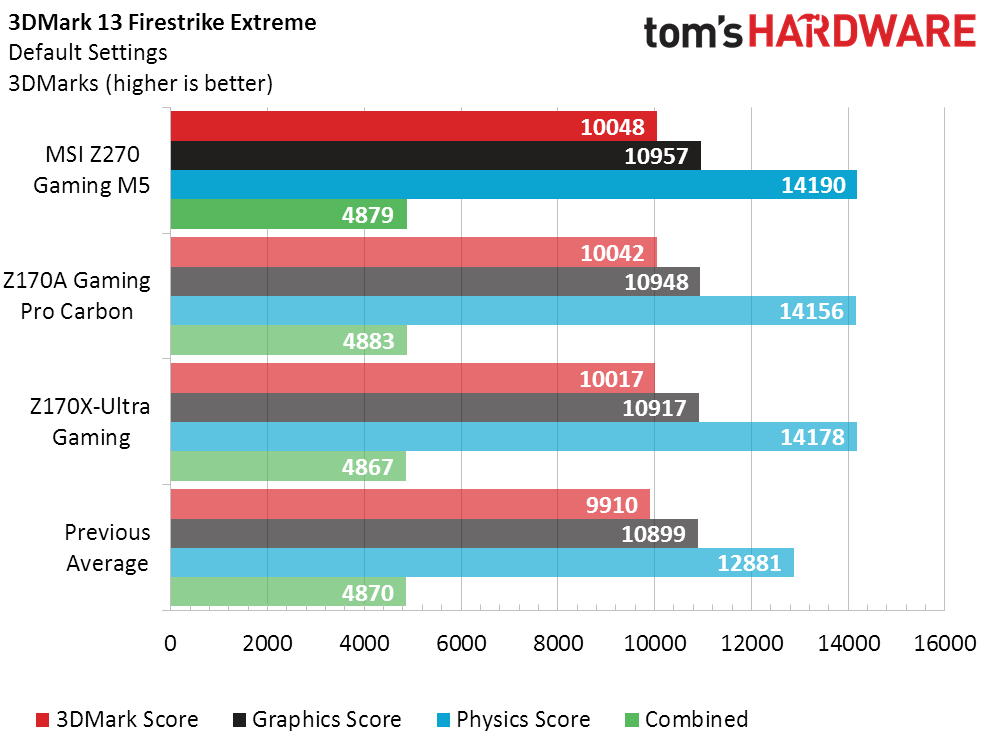
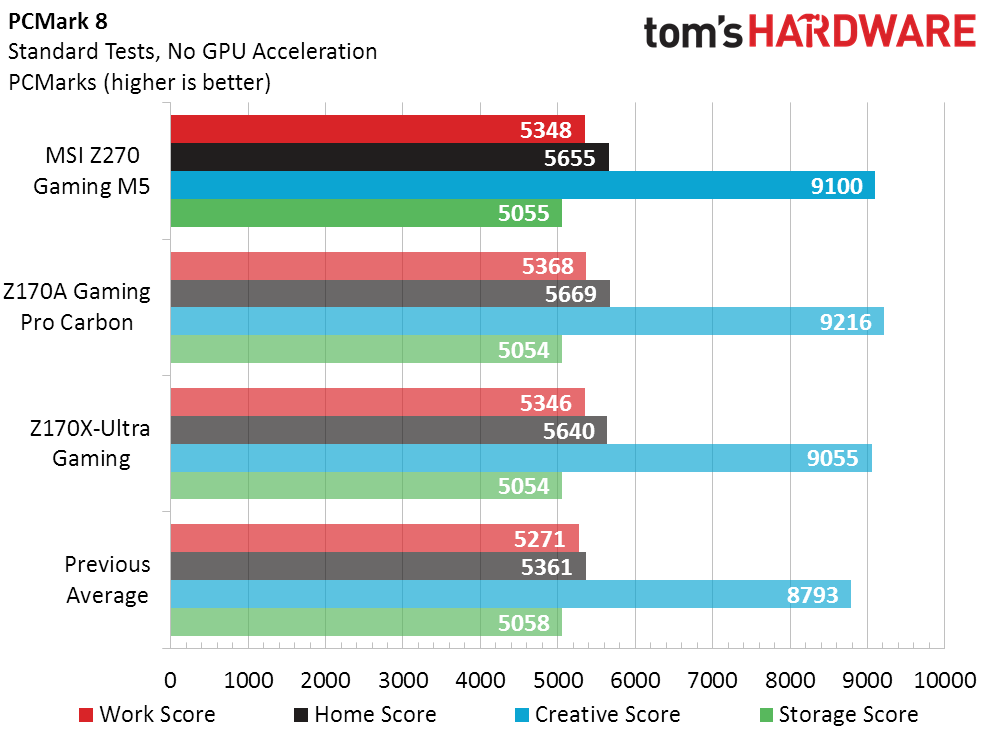
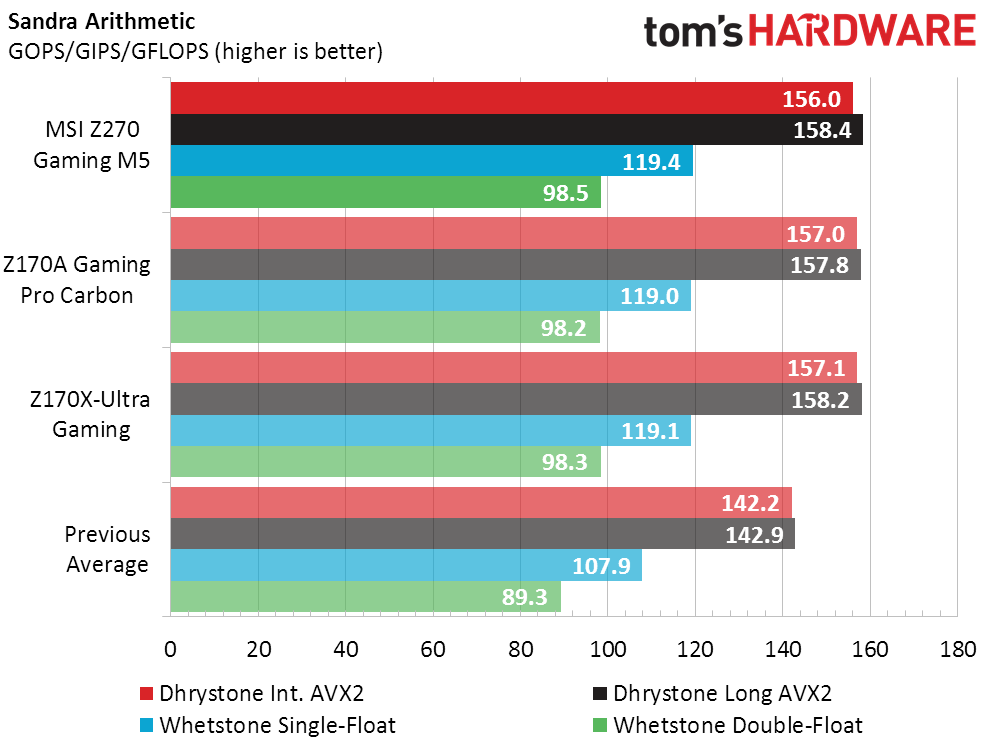
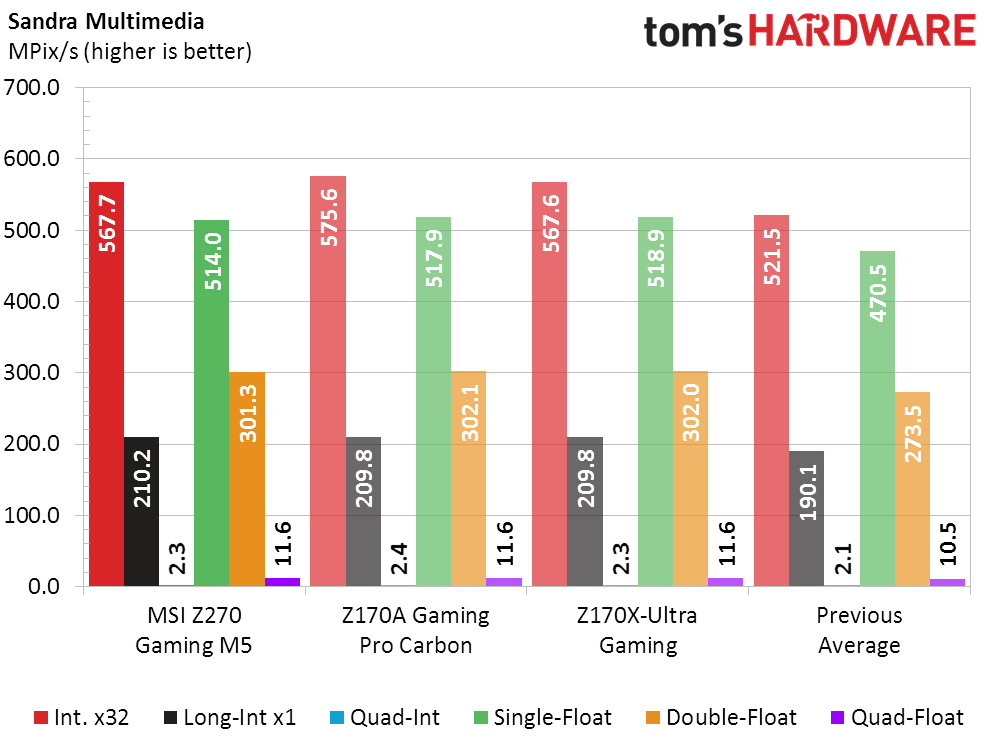
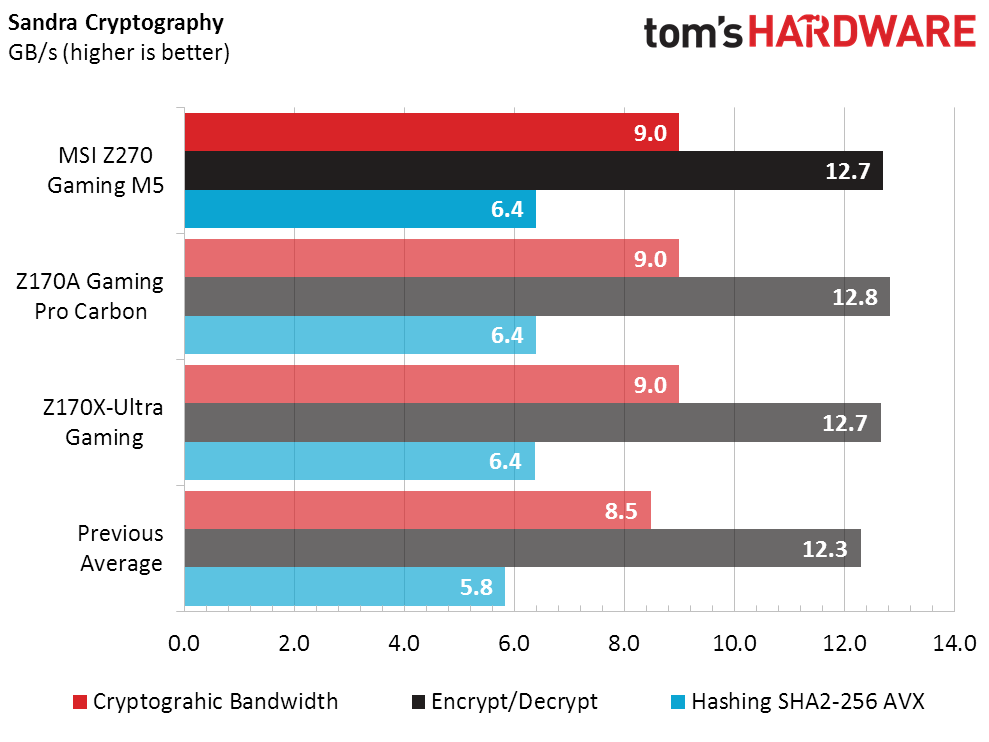
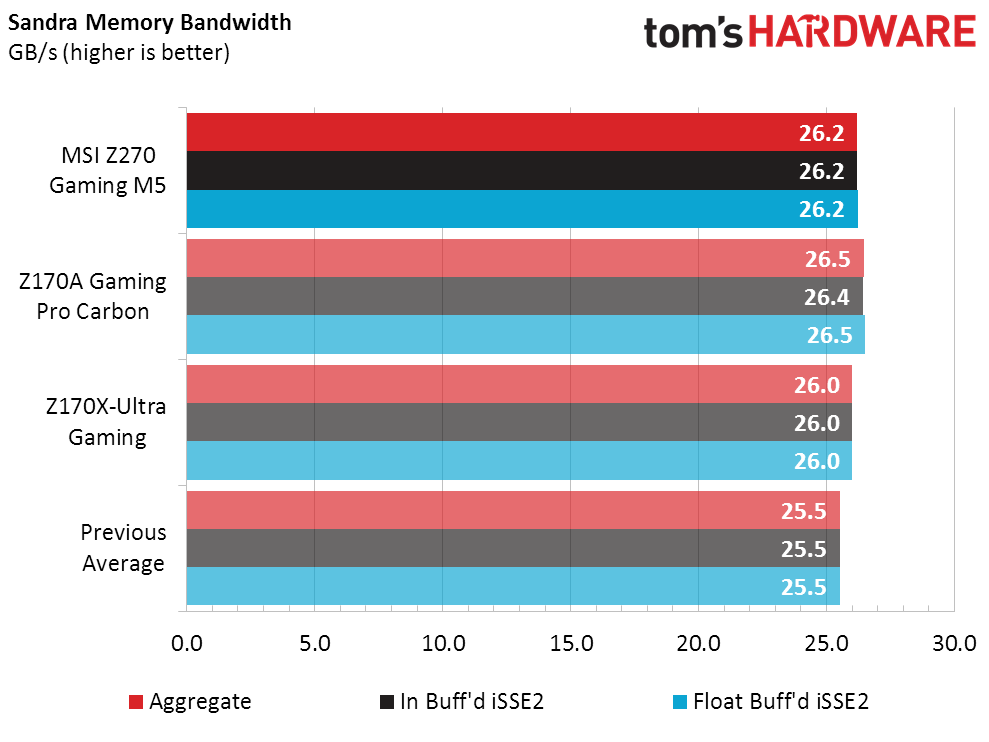
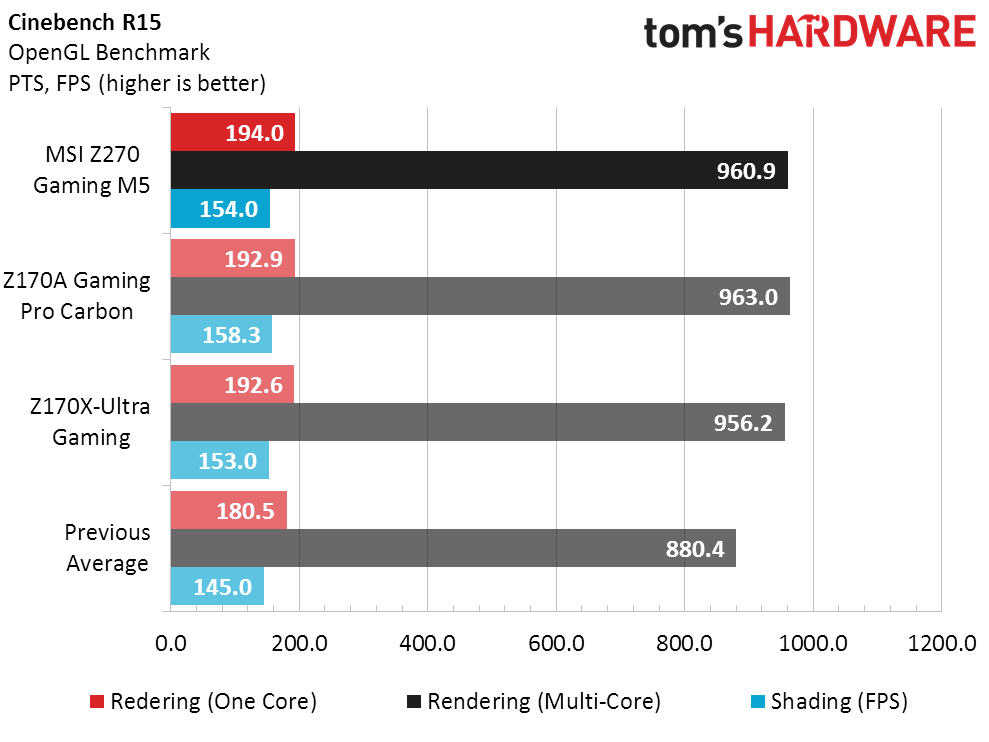
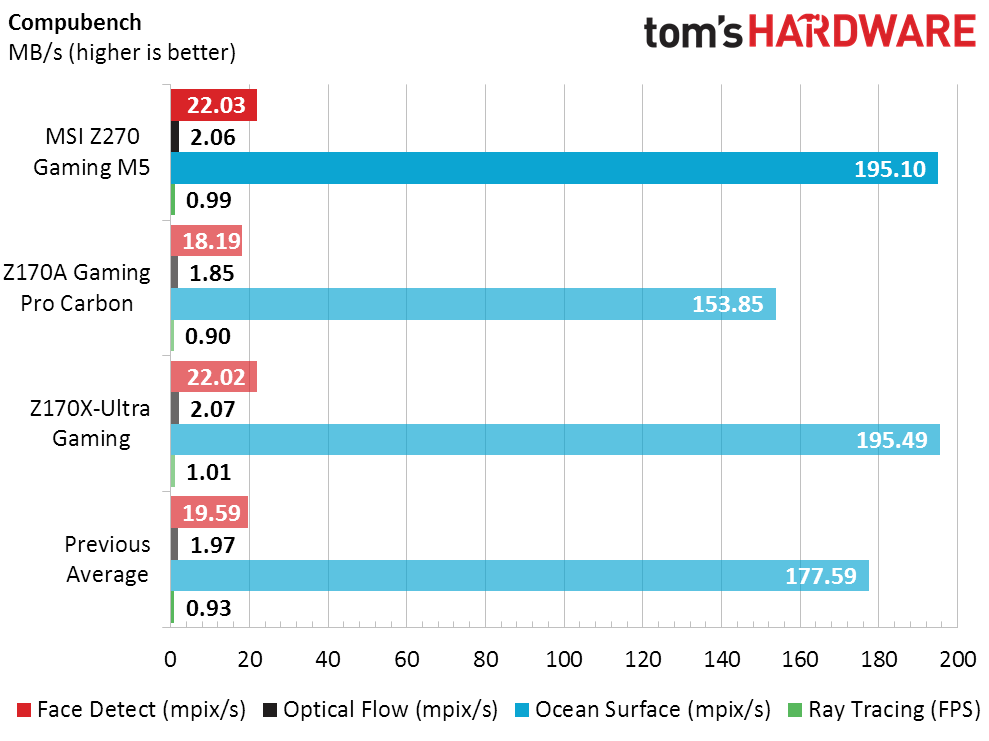
Mild Core i7-7700K advantages in PCMark’s Home and Creative bench lead us into more CPU-impacted tests such as Sandra Arithmetic. The Z270 Gaming M5 is a close match to Z170 boards in these measurements, as the only noteworthy difference is the exposure of four more HSIO pathways to allow the attachment of additional devices. Due to PCMark’s incompatibility with MSI’s Nahimic audio software, I disabled it for the entire synthetic suite and re-enabled it in games.
3D Games
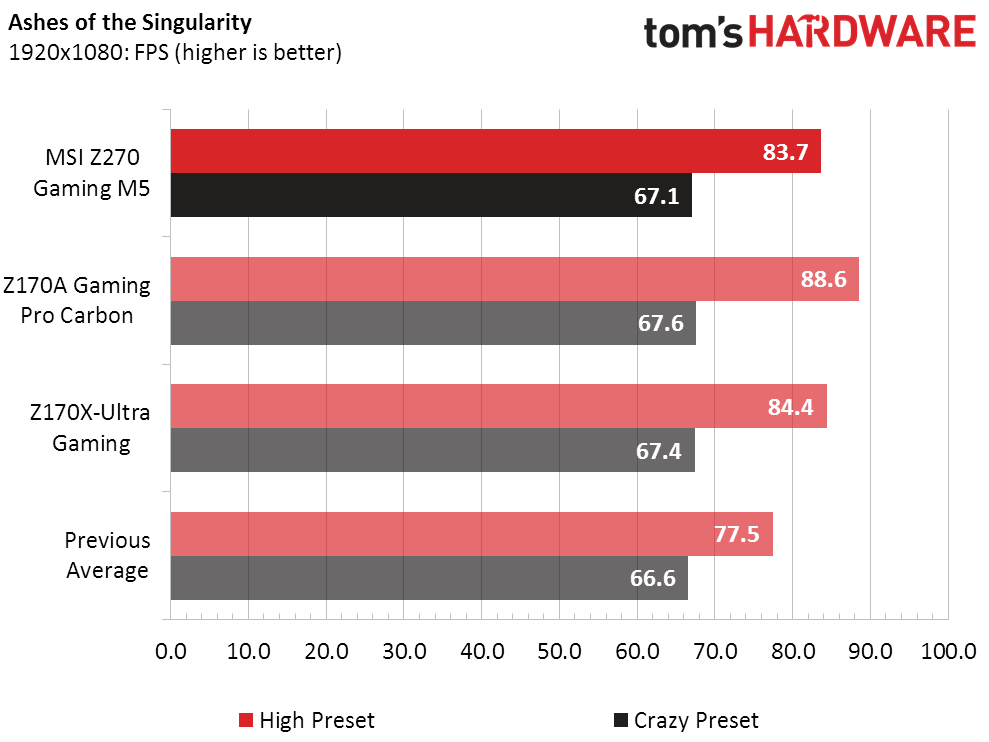
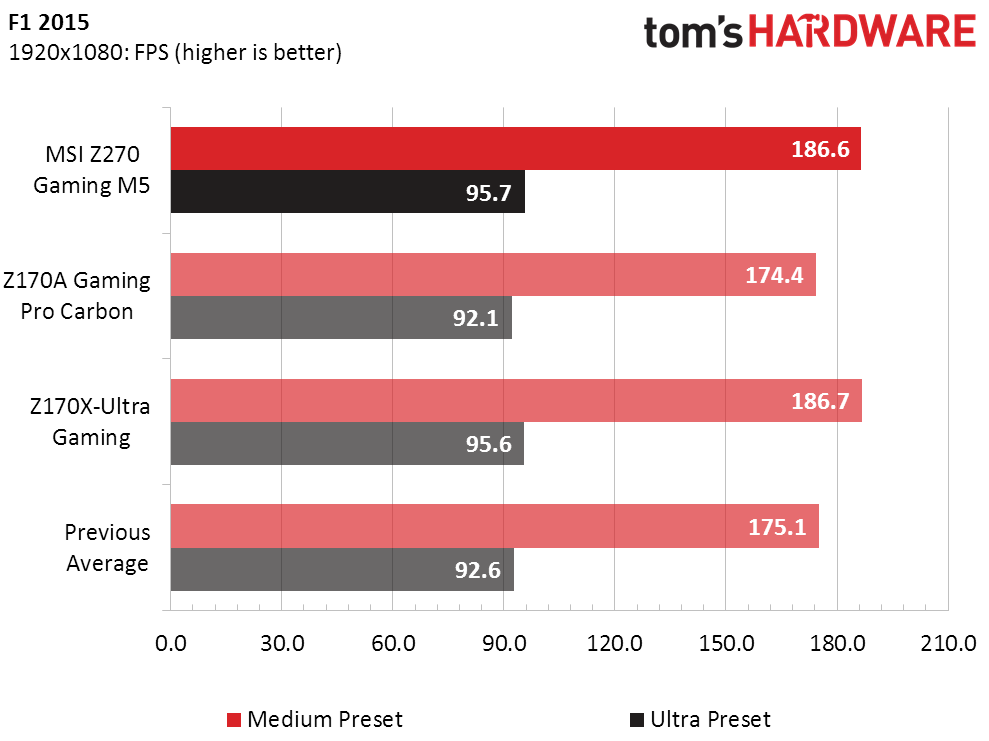
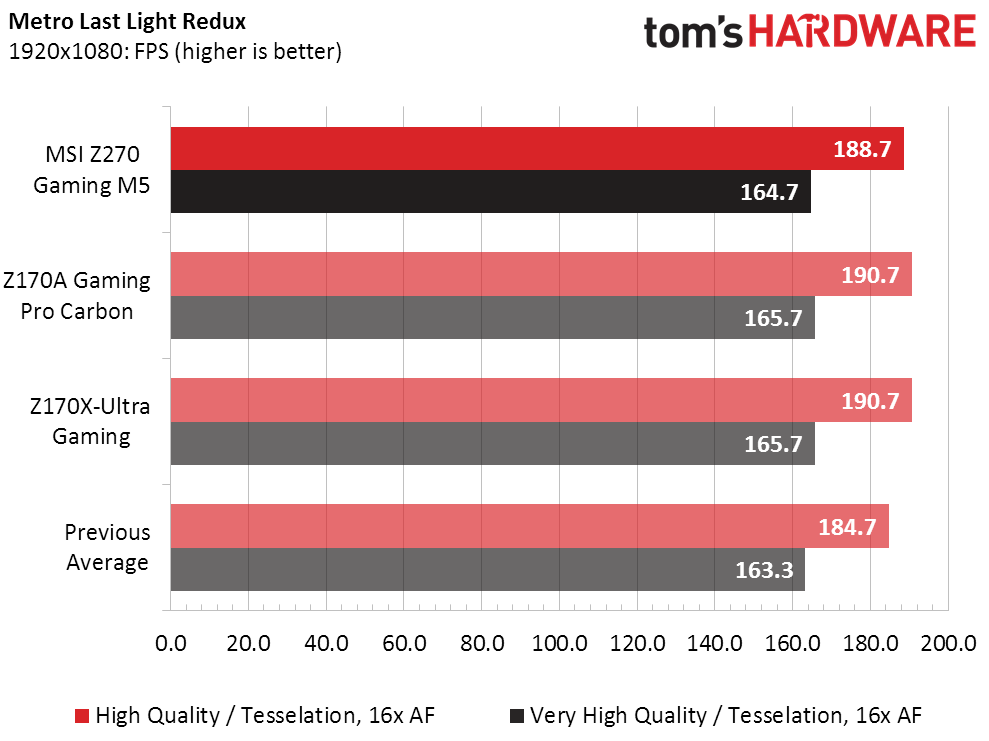
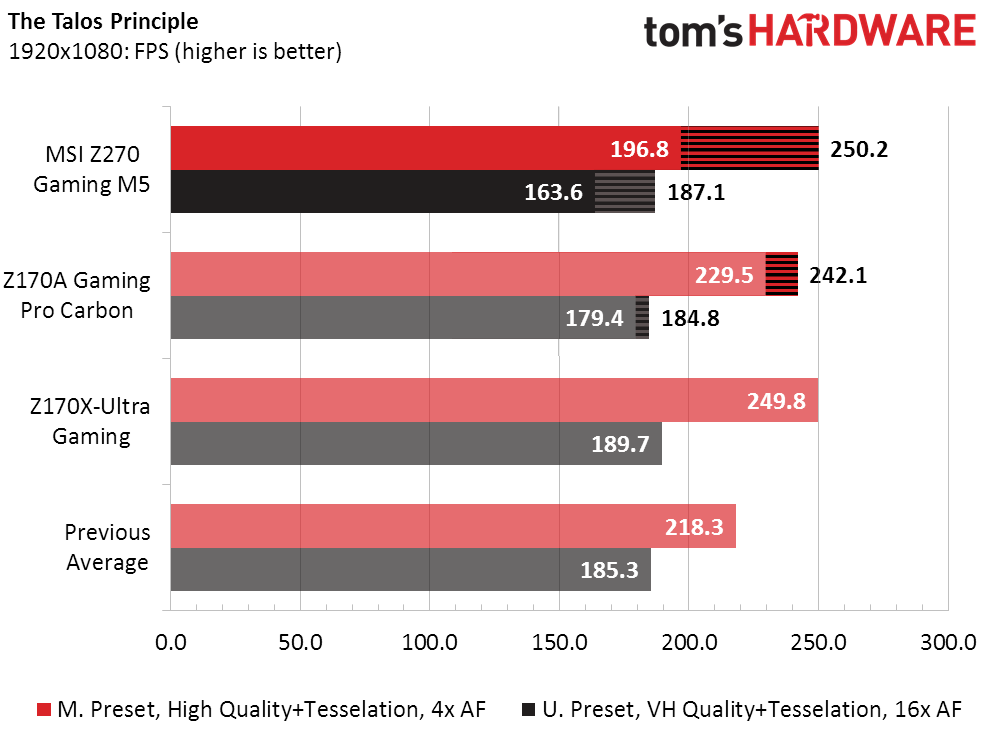
Game benchmarks again see the Z270 Gaming M5 providing closely-matched performance to Core i7-7700K-loaded Z170 platforms, but there’s a catch: Talos performance fell behind when Nahimic audio was enabled on the Z170A Gaming Pro Carbon, and the Z270 Gaming M5 fell even farther behind with Nahimic 2 enabled. The stripped tabs I added to the end of the Talos graph’s bars shows the performance level achieved with Nahimic and Nahimic 2 disabled.
Timed Applications
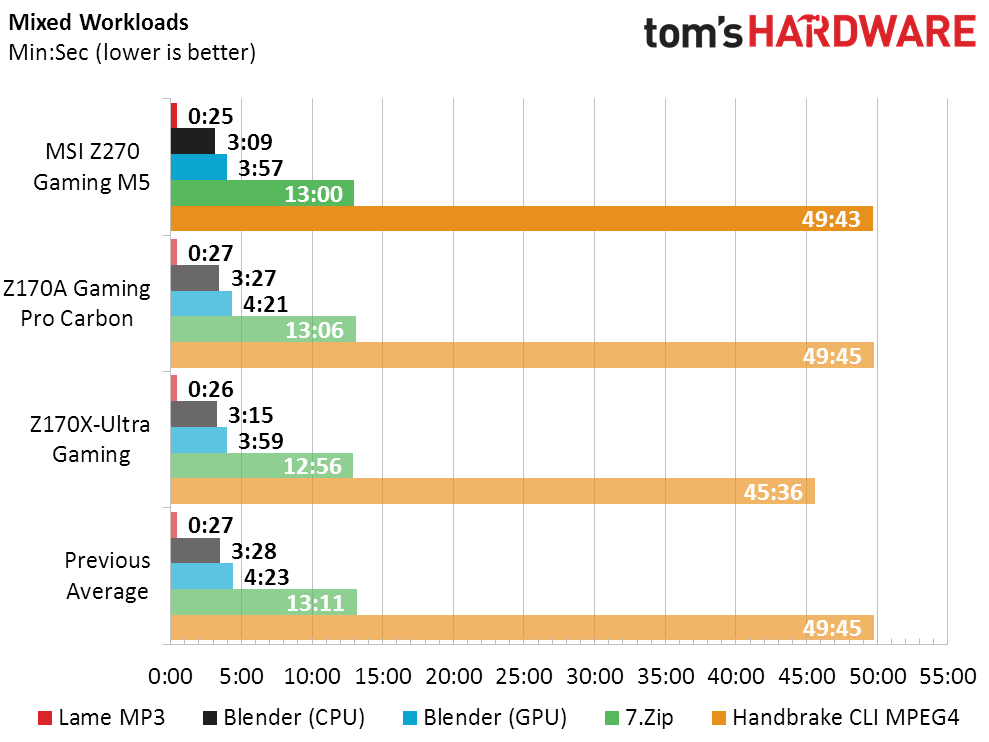
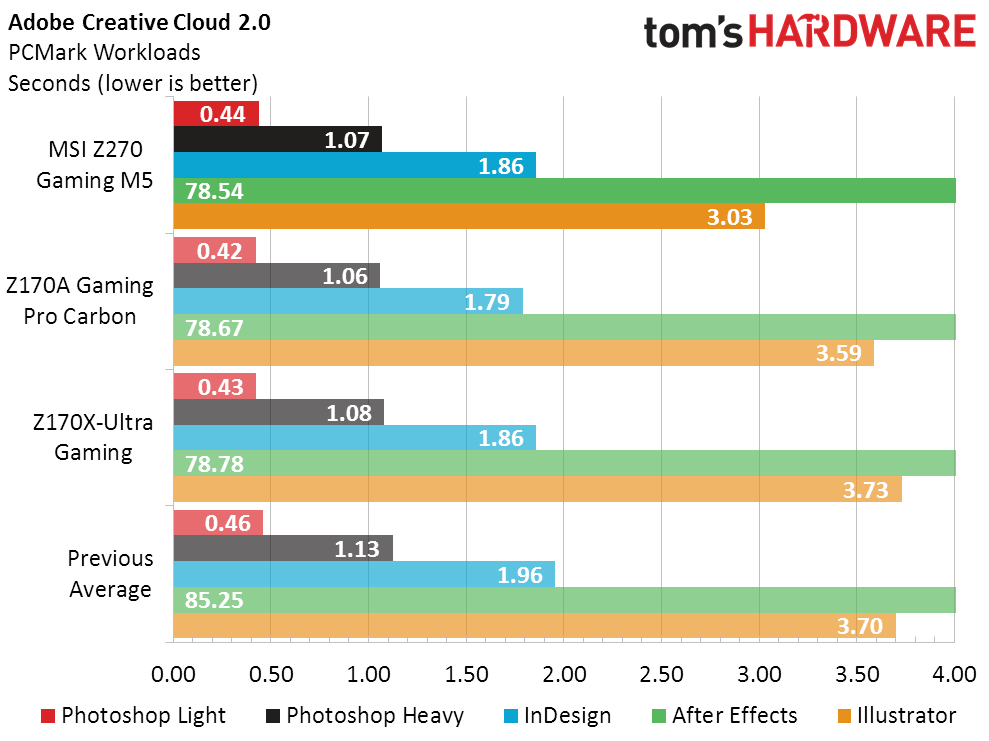
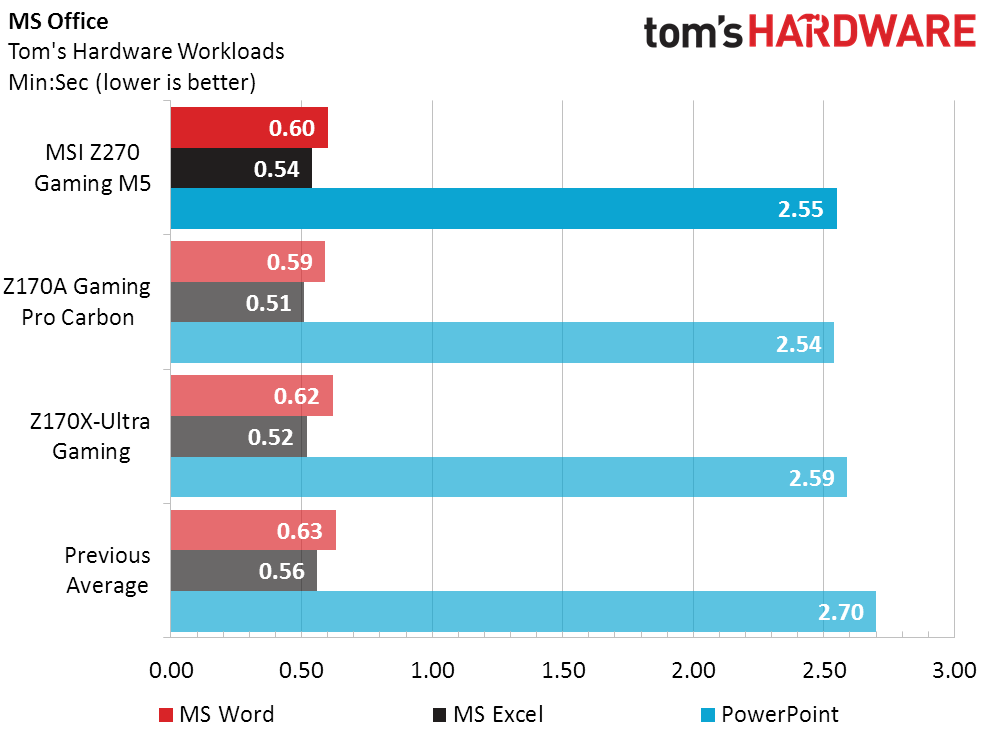
The Z270 Gaming M5 produces similar performance to the Z170A Gaming Pro Carbon in all of our real-world based office and productivity applications. The standout Z170X-Ultra Gaming score in Handbrake remains undefined, as testing the board with Nahimic software disabled had no impact on this metric.
Power, Heat, And Efficiency
The Z270 Gaming M5 produced similar CPU temperatures at slightly lower full-load wattage compared to the Z170A Gaming Pro Carbon. Higher voltage regulator temperatures likely reflect reduced airflow due to the design of the Z270 Gaming M5’s heat sink cover not working optimally with the design of our CPU cooler.
Get Tom's Hardware's best news and in-depth reviews, straight to your inbox.
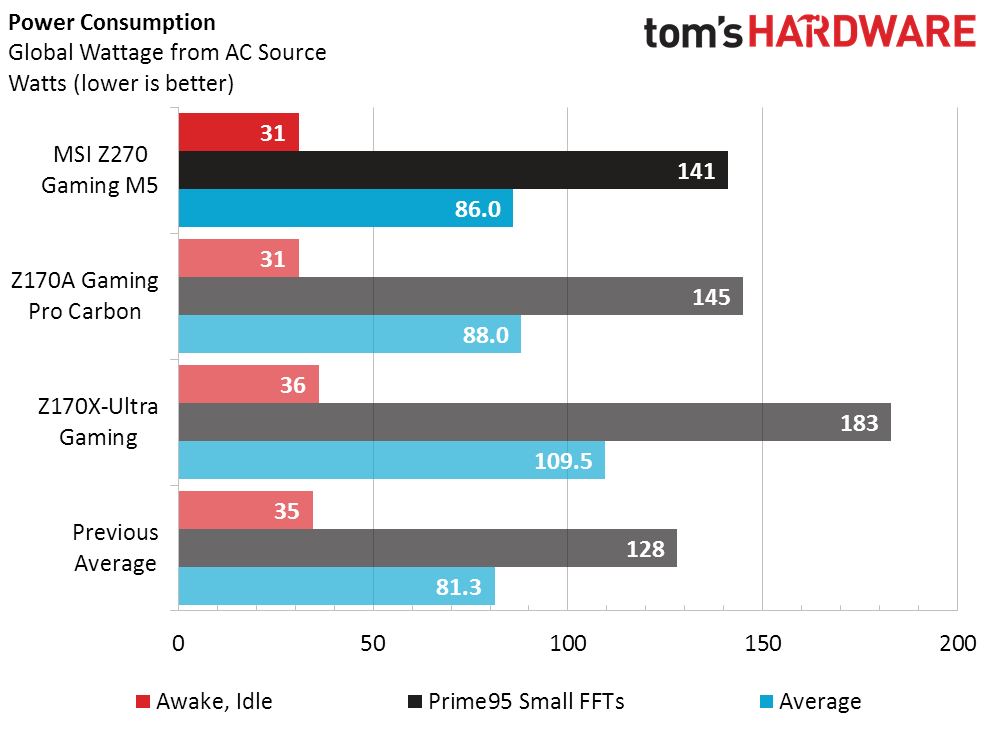
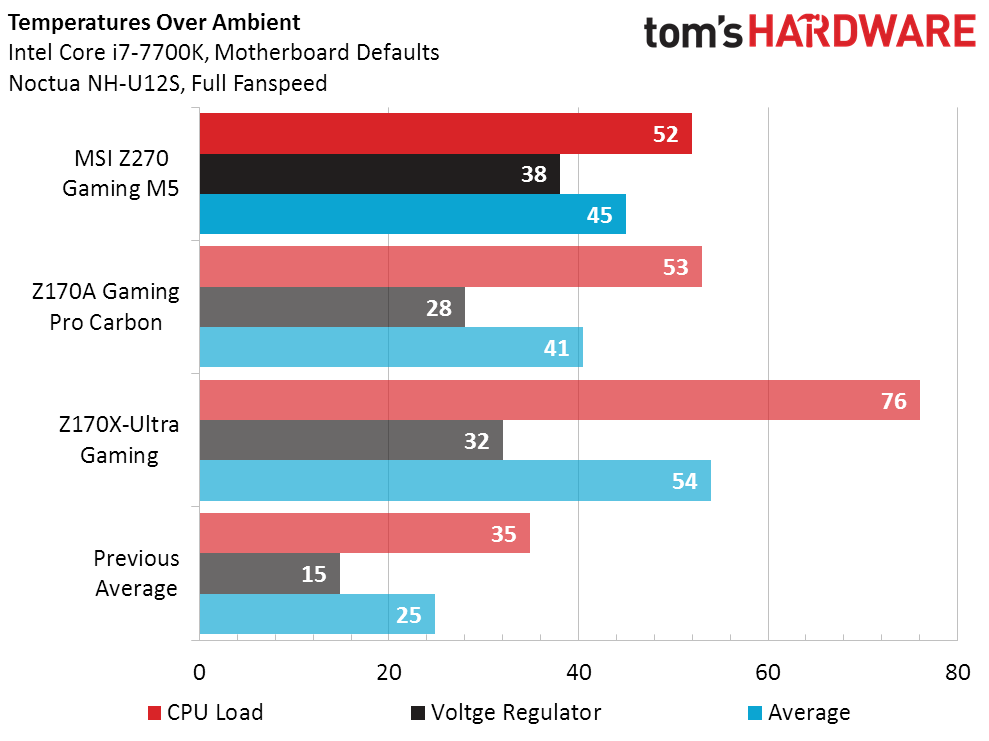

The Z270 Gaming M5 also has a miniscule overall performance advantage compared to the Z170A Gaming Pro Carbon, adding to its better overall efficiency.
Both the Z270 Gaming M5 and Z170A Gaming Pro Carbon reach 48x 100 MHz, but a slight BCLK cheat of 0.24 MHz puts it insignificantly ahead at 4814 MHz.
The rubber really meets the road in DRAM overclocking. Encouragement from both reviewers and memory manufacturers has pushed motherboard designers to seek the highest possible data rates without additional over-voltage tricks, and it’s paid off for MSI in the Z270 Gaming M5 with a 3636 MHz four-DIMM data rate at an actual volt-meter verified 1.35V.
The Z270 Gaming M5 costs around $25 more than the Z170A Gaming Pro Carbon, and locating $25 worth of added value could be a little difficult. The Z270 provides four lanes of additional connectivity which MSI adds to a second M.2 connector. It’s hard to assign value to chipset-integrated features, but we’re told that the chipset is $5 costlier.
The Z270 Gaming M5 also adds a U.2 interface, but that interface gets disabled when a card is installed in its bottom PCIe slot. Other added-cost upgrades include the newer USB 3.1 controller with double the PCIe interface bandwidth, a numeric POST code display which really is useful for diagnosing blown parts or failed overclocks, and the Flashback+ feature that includes a special ASIC to update firmware without installing a compatible CPU, DRAM, or graphics device. Add the parts that were harder to assign monetary value to, along with some extra cables and RGB controller connectivity, and we’re probably getting pretty close to the $25 upgrade price.
Overclocking tips the scale in the Z270 Gaming M5’s favor, to the point that I can give it our basic stamp of approval without worrying about whether or not it's eventually beaten by an even better overclocking, similarly priced product.
MORE: Best Motherboards
MORE: How To Choose A Motherboard
MORE: All Motherboard Content
Follow us on Facebook, Google+, RSS, Twitter and YouTube.
Current page: Test Configuration, Results, And Final Analysis
Prev Page Accessories, Firmware And Overclocking-
A price is too high, that is how much fully equipped X99 ASrock mobo costs which in my book is better buy.Reply
-
shrapnel_indie ReplySince this review corresponds to Intel’s official launch, “Previous Averages” use the Core i7-6600K. We’ll eventually replace all of that data with 7700K results as our charts fill up.
Huh? I didn't know the 6600k morphed into an i7 from an i5, how do we pull that off at home? :D -
joex444 X99 CPUs also start at a price higher than any Kaby Lake i5 or i7 and while MSI isn't exactly the best, I would still rate them better than ASRock.Reply -
damric Encouraging to see that 212 base clock was stable. It's only a matter of time before we see some custom BIOSes that allow non-K overclocking on Kaby.Reply -
Crashman Reply
It will go higher still. I had to ADD a 20X CPU multiplier limit to cut the test a little shorter. Because let's face it, once you know a board will cover a 100% BCLK increase, anything more than that is superfluous.19111701 said:Encouraging to see that 212 base clock was stable. It's only a matter of time before we see some custom BIOSes that allow non-K overclocking on Kaby.
-
itsmedatguy Is Kaby Lake just the overclocker's platform? I'm still running an i7-3770k that I'm super content with, but I also switched to a massive 42" 4K monitor and feel shafted that I can't stream 4K content even with a GTX 1080. Any news on Ryzen supporting 4K the same as Kaby? I don't need an upgrade for performance, seems like a waste of my $ to switch platforms just to stream Netflix at 4K...ahg. F******* DRM!!!Reply -
TJ Hooker @itsmedatguy I think you can get streaming/media boxes that support Netflix 4K, may be a better/cheaper alternative to upgrading your PC if you're happy with your current performance.Reply -
elbert Well I wasn't to far off as they are now offer free intel SSD with purchase.Reply
https://www.msi.com/Promotion/Z270-motherboard-ssd-bundle
